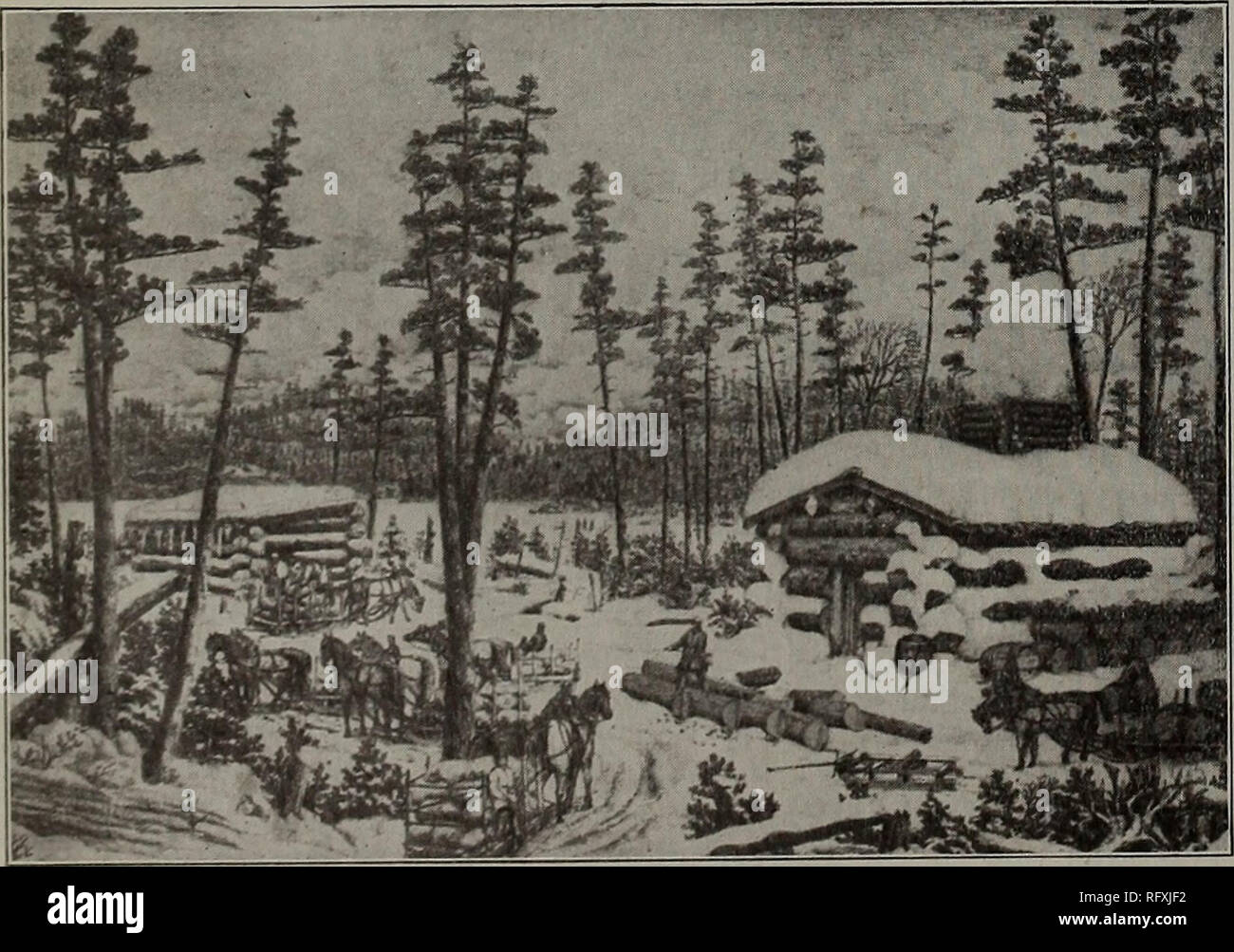. Canadian forest industries January-June 1913. Lumbering; Forests and forestry; Forest products; Wood-pulp industry; Wood-using industries. 36 CANADA LUMBERMAN AND WOODWORKER Passing of the Trade in Square Timber Conditions Which Have Led to the Decline of a Once Famous Forest Industry— Interesting Statistics from 1845 to Date The accompanying table is the first of its kind that has been published, giving practically complete statistics of the export trade of Quebec in white pine hewn timber from 1845 to the present date. The figures in this table have been compiled for the Canada Lumber- man

Image details
Contributor:
Book Worm / Alamy Stock PhotoImage ID:
RFXJF2File size:
7.1 MB (426.1 KB Compressed download)Releases:
Model - no | Property - noDo I need a release?Dimensions:
1886 x 1325 px | 31.9 x 22.4 cm | 12.6 x 8.8 inches | 150dpiMore information:
This image is a public domain image, which means either that copyright has expired in the image or the copyright holder has waived their copyright. Alamy charges you a fee for access to the high resolution copy of the image.
This image could have imperfections as it’s either historical or reportage.
. Canadian forest industries January-June 1913. Lumbering; Forests and forestry; Forest products; Wood-pulp industry; Wood-using industries. 36 CANADA LUMBERMAN AND WOODWORKER Passing of the Trade in Square Timber Conditions Which Have Led to the Decline of a Once Famous Forest Industry— Interesting Statistics from 1845 to Date The accompanying table is the first of its kind that has been published, giving practically complete statistics of the export trade of Quebec in white pine hewn timber from 1845 to the present date. The figures in this table have been compiled for the Canada Lumber- man by the Harper Wade Export Company, Quebec, P.Q., being secured principally from the J. Bell Forsyth annual circulars. The table shows the quantity of timber received, the quantity exported and the quantity of stocks wintered, together with current prices for timber measured off in the raft at Quebec coves. The course of the trade is very clearly indicated by these interesting figures. The most interesting fact, of course, is the gradual decline in the trade, which is shown practically from the year 1845, when the total supply was 24, 223, 000 cubic feet. The greatest total supply shown in any one year was in 1852, when it amounted to 27, 631, 000 cubic feet. In the earlier part of the last century the entire export of Quebec pine was in the form of timber in the squared log hewn with the axe and floated down to Quebec merchants to put it in shipping order by butting and dressing it at the Quebec shipping coves, disposing of the culls locally for wharf building and other similar purposes. The greater part of the timber so received and shipped was white pine, squared to a sharp edge on the four corners. Deals were made for export to other countries and only reached the English market in the character of stowage deals. The square logs (and later on waney) were converted into planks and boards at various sawmills in the great towns of England and in the country yards. The Waney Pine